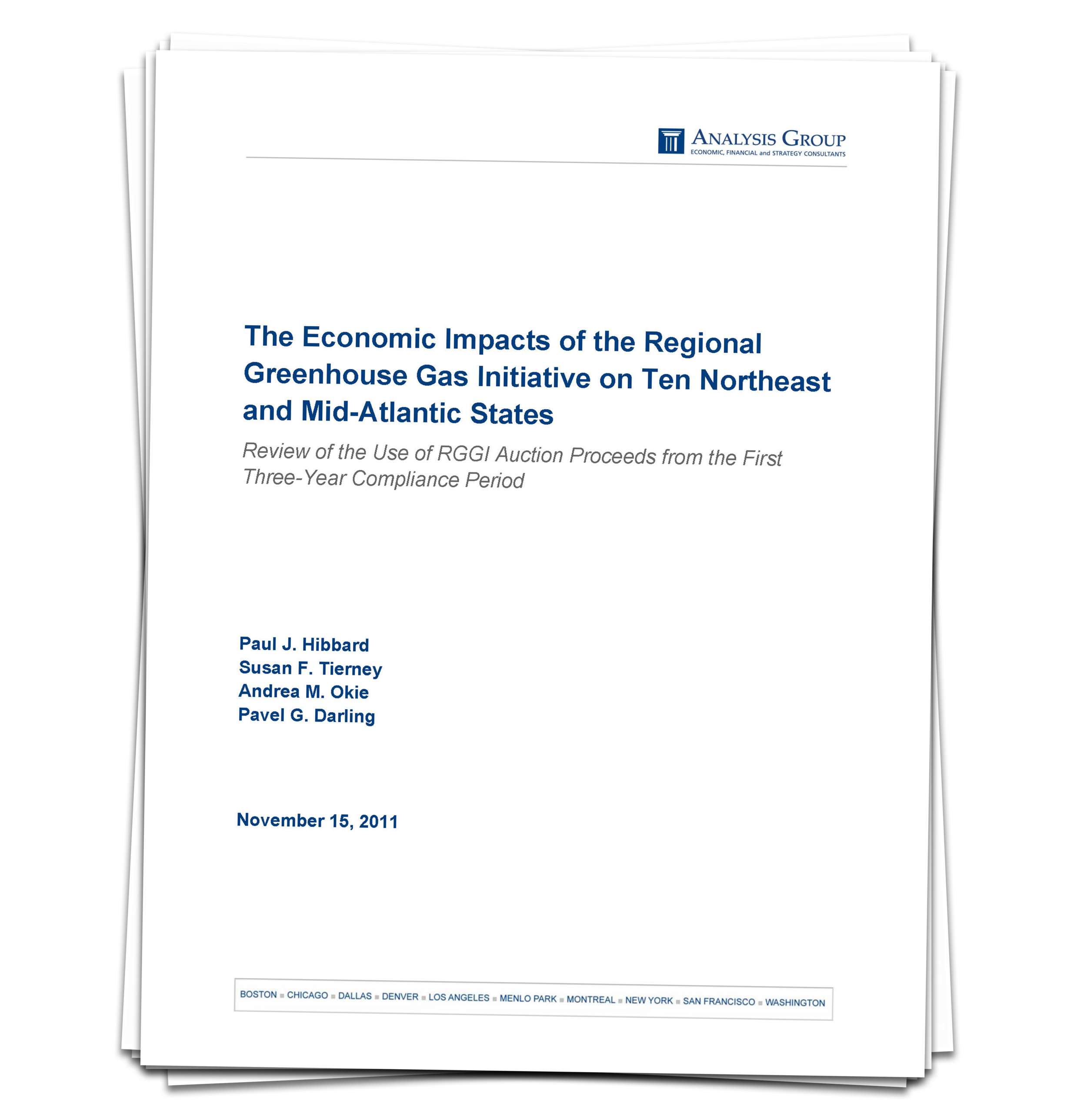NEW REPORT (May 16, 2023) — Analysis Group today released the fourth independent RGGI economic report, finding that this first-in-the-nation, multi-state, cap-and-invest program delivered $669 million in net economic value and nearly 8,000 job-years from 2018-2020 to participating states.* But the report does more than review past performance; it also looks at today and tomorrow—and for the first time examines how the RGGI states are tackling environmental justice (EJ) and equity priorities. The report provides a snapshot of what all 12 RGGI states (including VA and PA) are doing to address EJ priorities, and offers policy options that could ensure RGGI reduces health, economic and environmental inequities for overburdened communities.
Key takeaways: RGGI continues to reduce carbon pollution and deliver economic benefits for all member states, serving as a consistent engine of climate progress since RGGI started (2009), furthering a 46% reduction of carbon emissions, $5.7 billion in net economic benefits and 48,000 job-years. However positive this trend may be, more is needed to address the unequal pollution burden experienced by EJ communities. The states are recognizing this, and are taking new and innovative approaches to advance EJ and equity priorities. This report shows how RGGI can deliver on both important carbon pollution and equity goals.
*The RGGI report’s economic analysis includes only the 10 member states participating in an auction during this 4th compliance period (2018-2020), not including VA and PA. However, both Virginia and Pennsylvania are included in the discussion of key equity priorities.
For press inquiries, contact:
Amanda Kolling | amanda@resource-media.org | 304-942-7148
Carrie Cullen | carrie@resource-media.org | 862-881-9277
For more information, contact Laurie Burt at laurie@laurieburt.com.

































